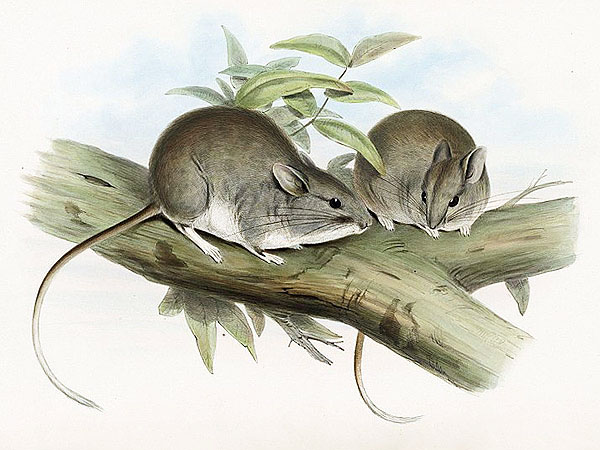Lesser Stick-Nest Rat (Leporillus apicalis)
The Lesser Stick-Nest Rat, which is also known as White-tipped Stick-Nest Rat, is a true rodent that formerly inhabited the arid regions of central Australia, where it appears to have formerly been quite widespread.
The species is known to have accumulated large mounds of sticks over years to construct its nests which then could grow to sizes of about 3 m in length and 1 m in height; these nests were placed at the foot of a tree or inside a natural cave.
Native people that were questioned in the 1980s could well remember these conspicuous nests.:
“Many people knew stick-nest rats by the large nests remaining in breakaway caves and from the stories that have been handed down about their former occupants. Only the very oldest people could remember nests other than in caves …. We could find no evidence that more than one species was recognised [sic].” [1]
The natives did not distinguish between the two known species and indiscriminately called both of them Purnuwuru, Tjuyalpi, Yininma or Yintjurrka.
The Lesser Stick-Nest Rat disappeared during the 1930s or the 1940s; however, there apparently was a sighting of a single individual in the 1970s.
“Once apparently very common, at least in some places, since Giles (1889) reported abundant nests out in the open in some areas. However, Spencer (1896) had difficulty in obtaining specimens near Alice Springs, so it may have already been in decline by then. In the 1930s Tindale shot ciné-photography in north-western South Australia of Aborigines huting [sic] stick-nest rats with the aid of dogs.” [1]
*********************

(public domain)
*********************
References:
[1] Andrew A. Burbridge; Ken A. Johnson; Phillip J. Fuller; R. I. Southgate: Aboriginal knowledge of the mammals of the central deserts of Australia. Australian Wildlife Research 15: 9-39. 1988
*********************
edited: 24.02.2024
